Abstract
Bacterial spore heat resistance at intermediate water activity, like aqueous and strictly dry heat resistance, is a property manipulatable by chemical pretreatments of the dormant mature spore. Heat resistances differ widely, and survival is prominently nonlogarithmic for both chemical forms of the spore. Log survival varies approximately as the cube of time for the resistant state of Bacillus stearothermophilus spores and as the square of time for the sensitive state. A method for measuring heat resistance at intermediate humidity was designed to provide direct and unequivocal control of water vapor concentration with quick equilibration, maintenance of known spore state, and dispersion of spores singly for valid survivor counting. Temperature characteristics such as z, Ea, and Q10 cannot be determined in the usual sense (as a spore property) for spores encapsulated with a constant weight of water. Effect on spore survival of temperature induced changes of water activity in such systems is discussed.
Full text
PDF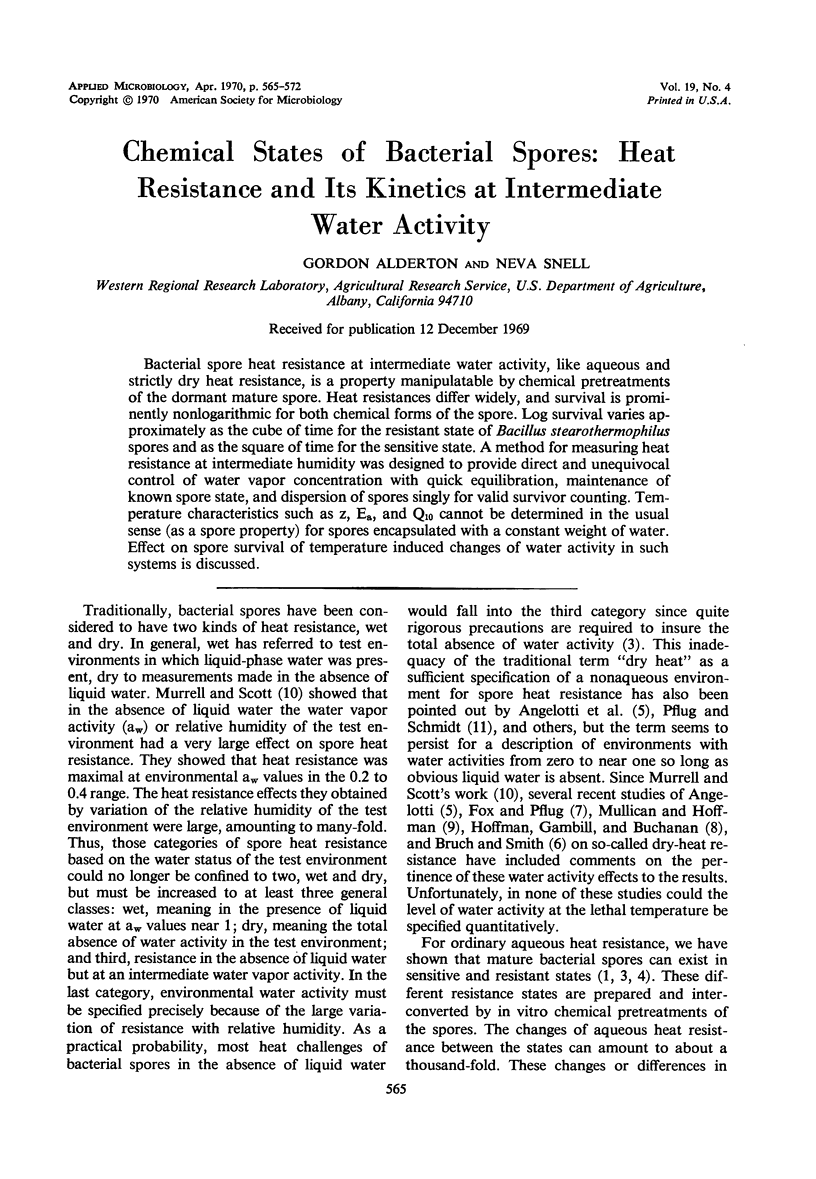
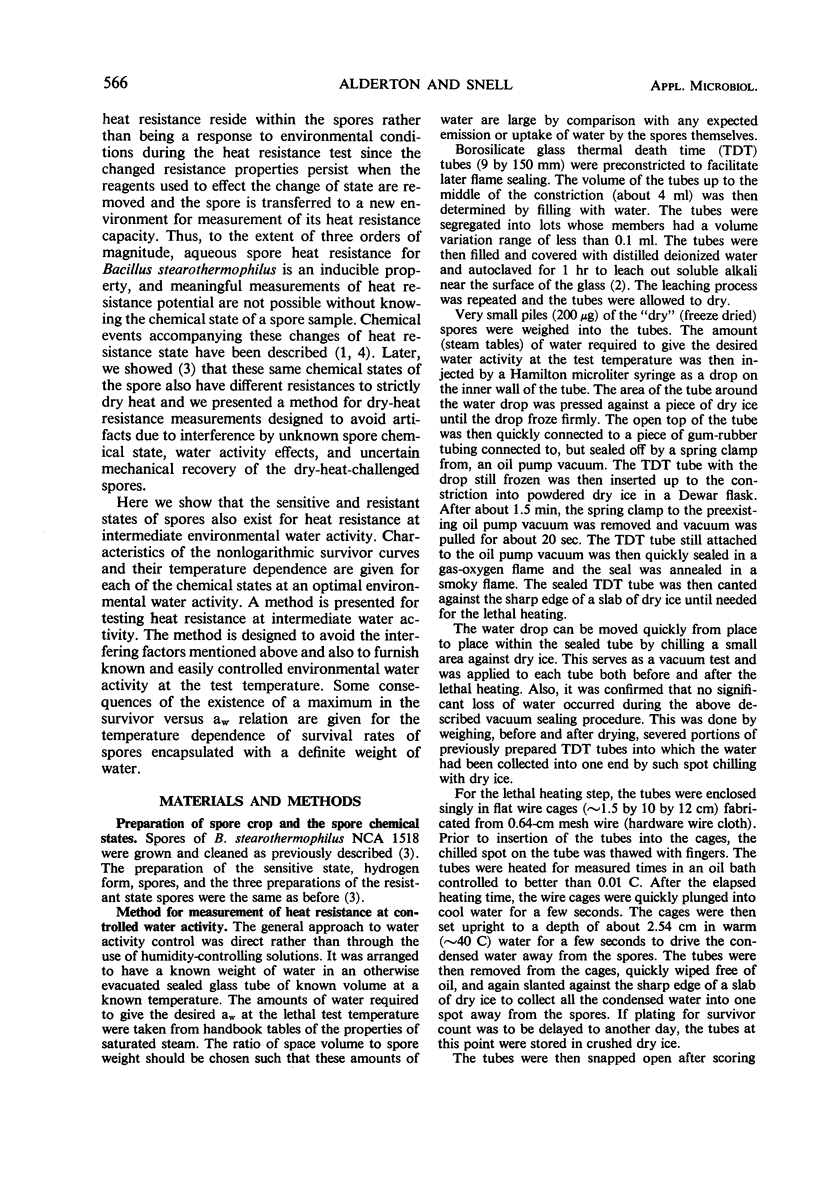
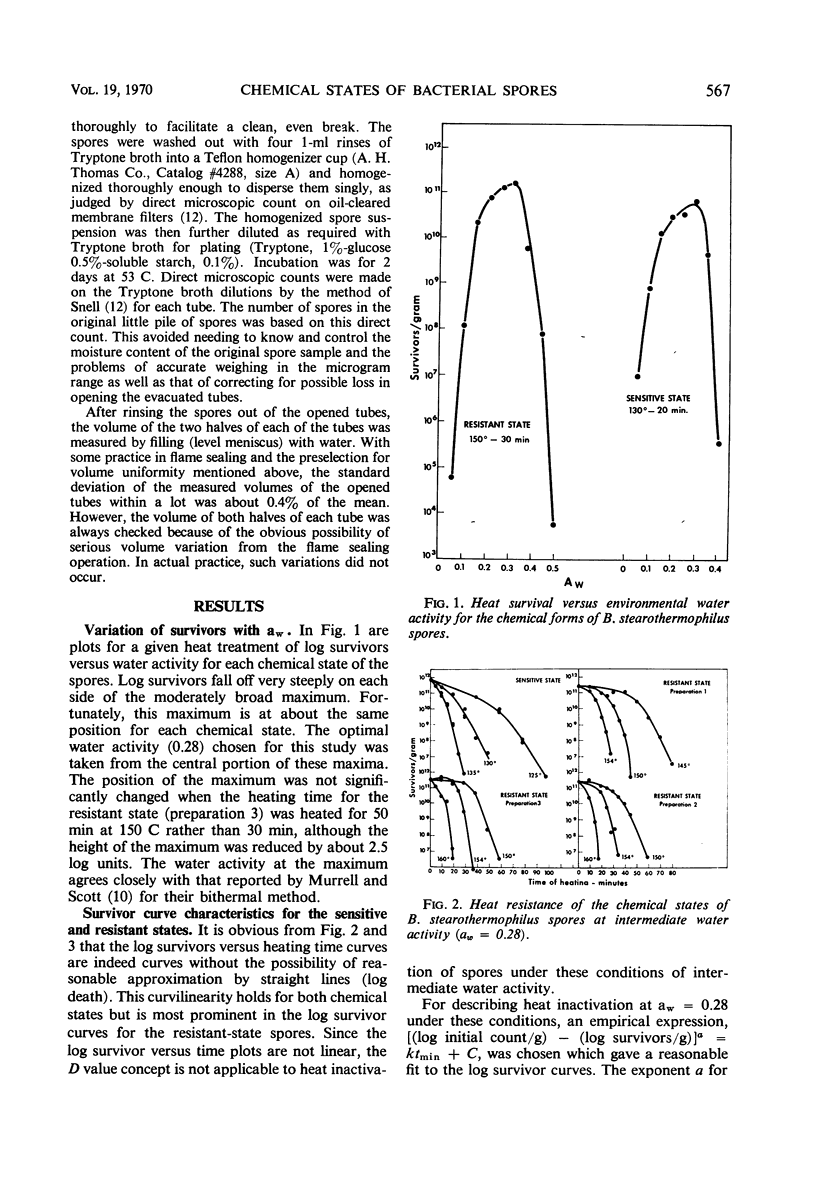
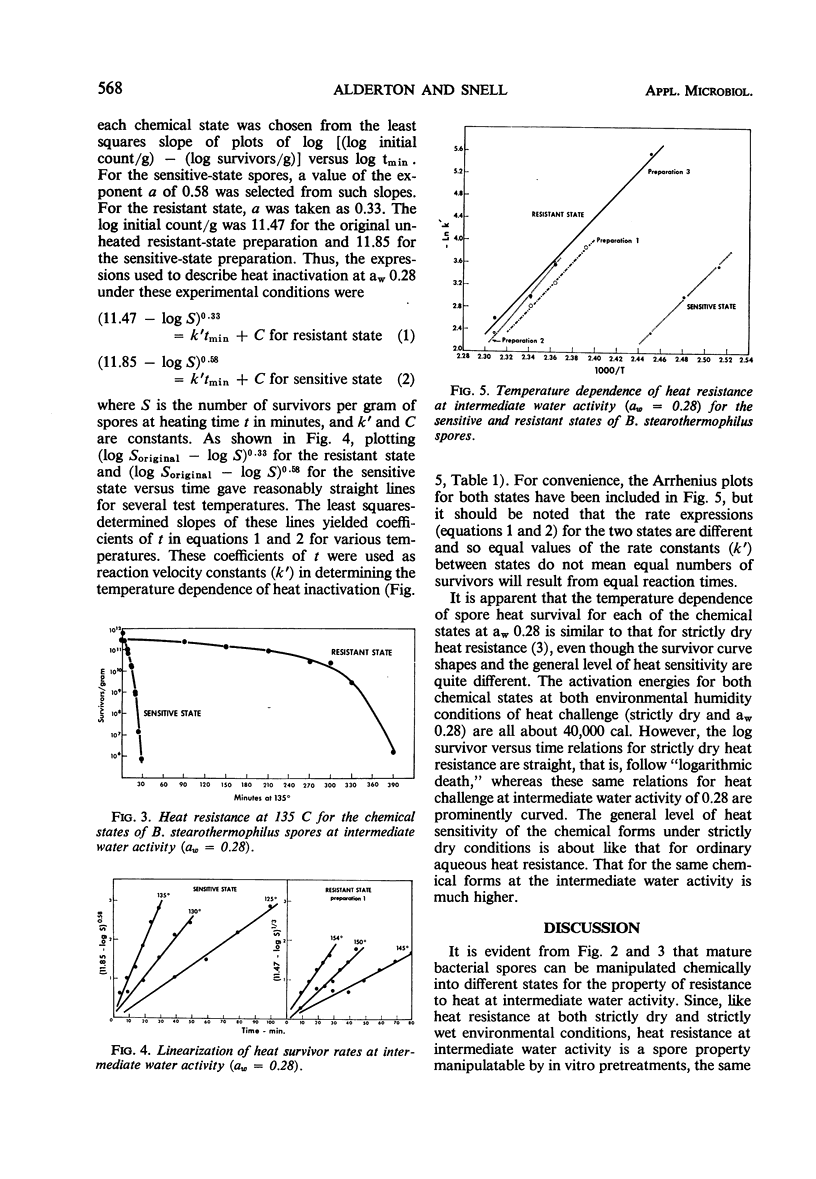
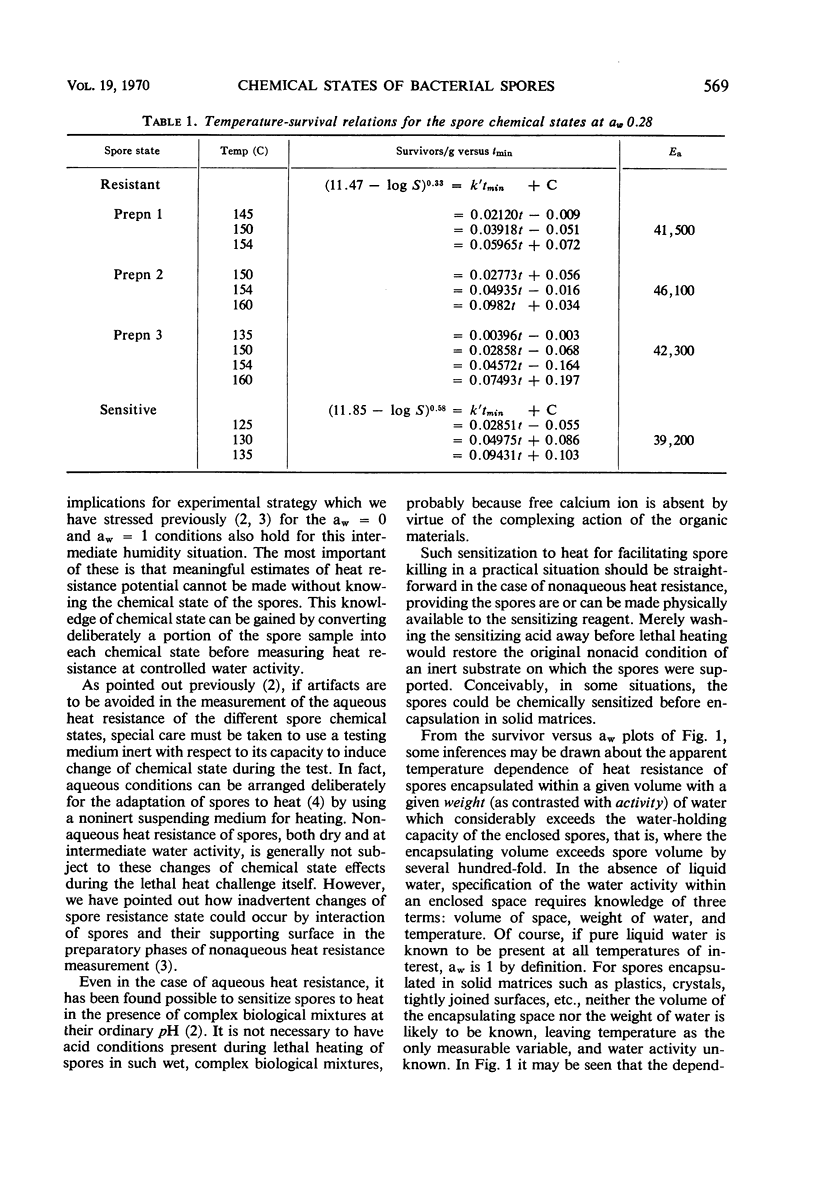
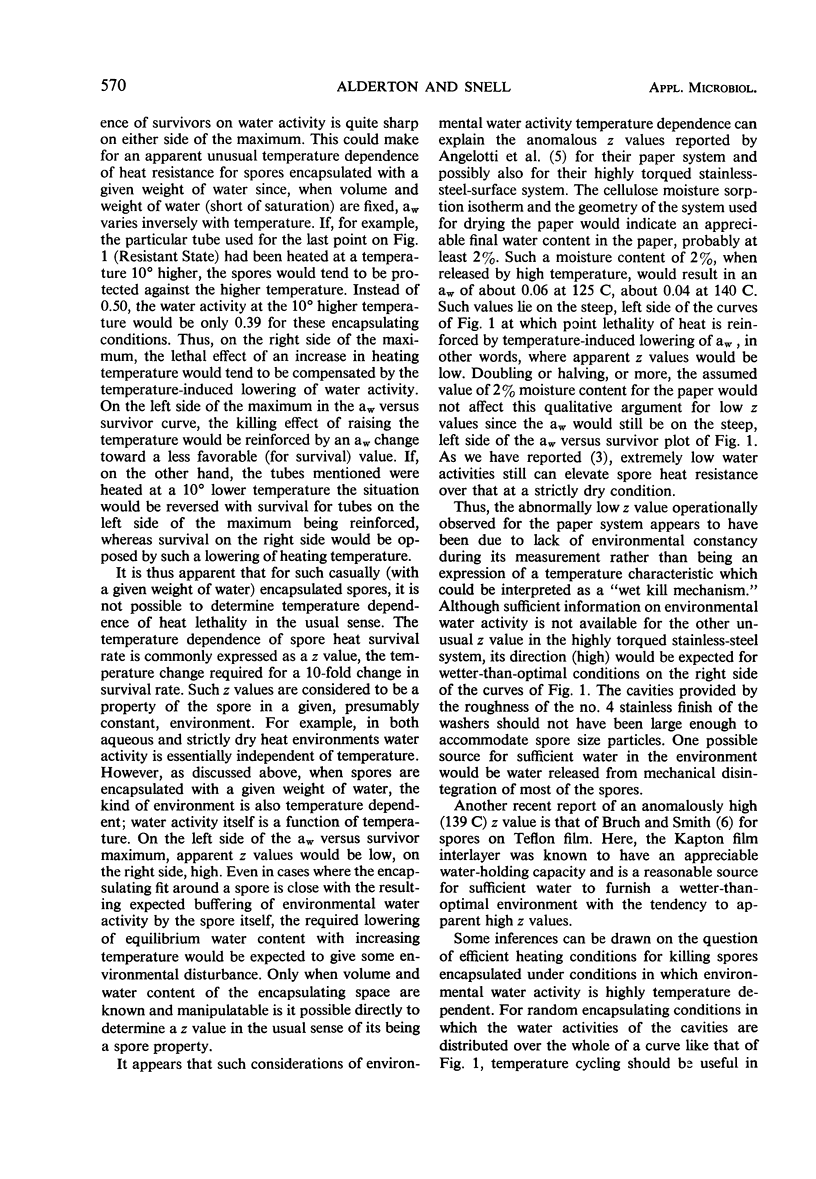
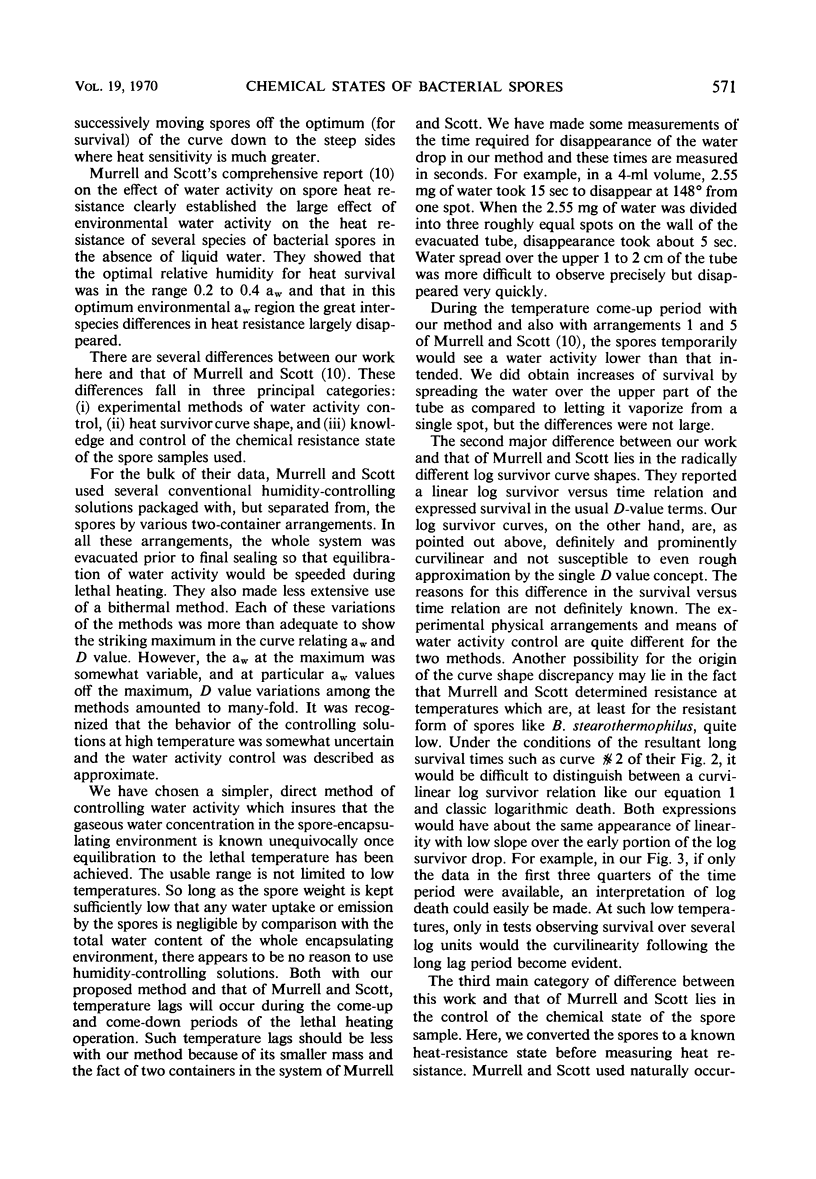
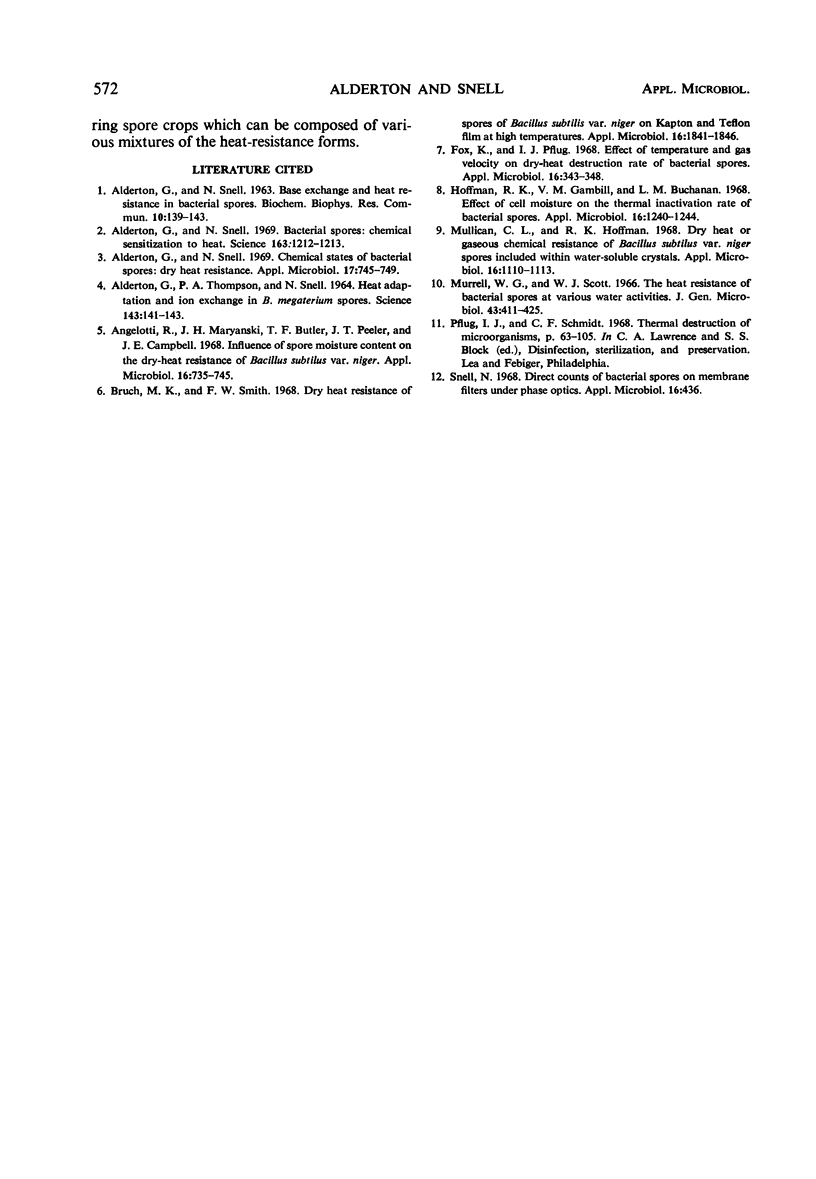
Selected References
These references are in PubMed. This may not be the complete list of references from this article.
- ALDERTON G., SNELL N. Base exchange and heat resistance in bacterial spores. Biochem Biophys Res Commun. 1963 Jan 31;10:139–143. doi: 10.1016/0006-291x(63)90039-1. [DOI] [PubMed] [Google Scholar]
- ALDERTON G., THOMPSON P. A., SNELL N. HEAT ADAPTATION AND ION EXCHANGE IN BACILLUS MEGATERIUM SPORES. Science. 1964 Jan 10;143(3602):141–143. doi: 10.1126/science.143.3602.141. [DOI] [PubMed] [Google Scholar]
- Alderton G., Snell N. Bacterial spores: chemical sensitization to heat. Science. 1969 Mar 14;163(3872):1212–1213. doi: 10.1126/science.163.3872.1212. [DOI] [PubMed] [Google Scholar]
- Alderton G., Snell N. Chemical states of bacterial spores: dry-heat resistance. Appl Microbiol. 1969 May;17(5):745–749. doi: 10.1128/am.17.5.745-749.1969. [DOI] [PMC free article] [PubMed] [Google Scholar]
- Angelotti R., Maryanski J. H., Butler T. F., Peeler J. T., Campbell J. E. Influence of spore moisture content on the dry-heat resistance of Bacillus subtilis var. niger. Appl Microbiol. 1968 May;16(5):735–745. doi: 10.1128/am.16.5.735-745.1968. [DOI] [PMC free article] [PubMed] [Google Scholar]
- Bruch M. K., Smith F. W. Dry heat resistance of spores of Bacillus subtilis var. niger on Kapton and Teflon Film at high temperatures. Appl Microbiol. 1968 Dec;16(12):1841–1846. doi: 10.1128/am.16.12.1841-1846.1968. [DOI] [PMC free article] [PubMed] [Google Scholar]
- Fox K., Pflug I. J. Effect of temperature and gas velocity on dry-heat destruction rate of bacterial spores. Appl Microbiol. 1968 Feb;16(2):343–348. doi: 10.1128/am.16.2.343-348.1968. [DOI] [PMC free article] [PubMed] [Google Scholar]
- Hoffman R. K., Gambill V. M., Buchanan L. M. Effect of cell moisture on the thermal inactivation rate of bacterial spores. Appl Microbiol. 1968 Aug;16(8):1240–1244. doi: 10.21236/ad0835496. [DOI] [PMC free article] [PubMed] [Google Scholar]
- Mullican C. L., Hoffman R. K. Dry heat or gaseous chemical resistance of Bacillus subtilis var. niger spores included within water-soluble crystals. Appl Microbiol. 1968 Aug;16(8):1110–1113. doi: 10.1128/am.16.8.1110-1113.1968. [DOI] [PMC free article] [PubMed] [Google Scholar]
- Murrell W. G., Scott W. J. The heat resistance of bacterial spores at various water activities. J Gen Microbiol. 1966 Jun;43(3):411–425. doi: 10.1099/00221287-43-3-411. [DOI] [PubMed] [Google Scholar]
- Snell N. Direct counts of bacterial spores on membrane filters under phase optics. Appl Microbiol. 1968 Feb;16(2):436–436. doi: 10.1128/am.16.2.436-.1968. [DOI] [PMC free article] [PubMed] [Google Scholar]


